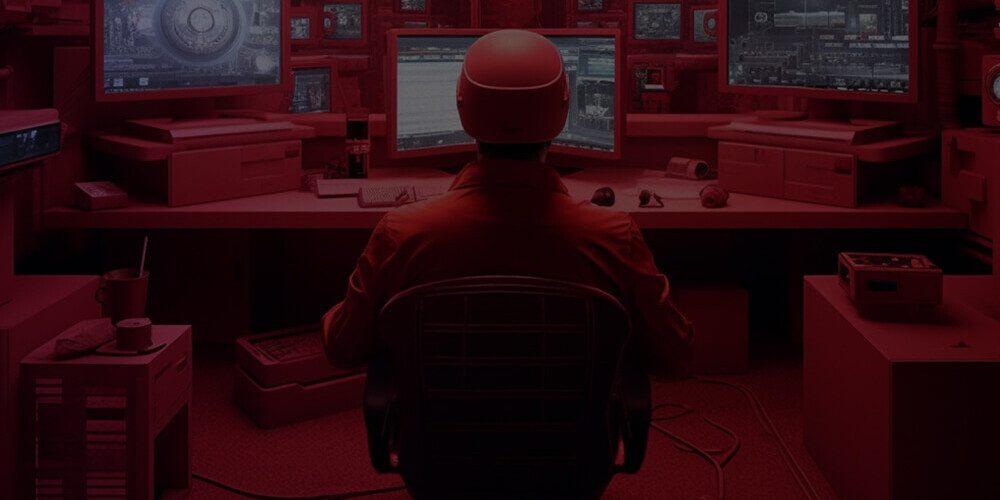Practical guide to working from home

MICHEL EDERY
Partner
The world changed in 15 days and it is our duty, as 2020 professionals, to quickly adapt to these changes and make the best of this situation.
Today, the competitiveness of companies will not only be measured by the quality, price, and differentiation of their services, but also by their level of performance and productivity.
That is why we decided to create these good practices to help improve everyone’s productivity at home:
Set up your workspace:
Make sure to set up a place in your home that will become your work area. Do not work on your bed, couch, or floor. Create a space that makes you feel immersed in a culture of work and productivity. The following are our recommendations for doing it in the best way:
- This site should preferably be isolated from noise and distractions.
- If you don’t have an isolated place, create isolation. You can separate your space using plants. This way, you will feel that this is your assigned workspace.
- Make sure the space is comfortable and pleasant. Use a comfortable chair, and if you don’t have one, you can use cushions to condition it. Also, recreate your desk and turn it into a pleasant space. Decorate it, be creative.
- Make sure you have easy access to an electrical connection. Having the possibility to charge your phone and computer is essential in a workspace.
- Make sure to set up in a location close to the internet router. Good internet stability is key. Often, the poor connectivity of a computer is not due to an internet service provider issue, but to the location or quality of the router. (Keep this in mind).
-
Make sure to manage the ambient temperature to your liking. Working in heat can sometimes be quite uncomfortable and lower productivity levels.
Design your daily routine:
Having a routine and following it with discipline is key to being productive while working from home. Here are some recommendations:
- Wake up at the same time you used to wake up to go to the office and follow the same routine. Shower, shave (for men), dress in comfortable work clothes, have breakfast and enter your workspace as if you were entering your office. I recommend you to be organized with this routine and feel like you are entering to work.
- Respect your lunchtime and don’t eat at your work desk. Define a space for this and respect the time.
- Respect your finishing time. Don’t turn your home into your workplace. Your home is your home, and it’s up to you to know how to differentiate the spaces and the hours. This is the only way to ensure your productivity in the medium and long term. Remember, you have to be well for your work to be well.
- Exercise. Define an exercise schedule and follow it, whether in the morning, at noon or in the evening. It’s essential to keep your circulation and physical condition in shape.
Design a work plan:
One of the great challenges of working from home is managing distractions and prioritizing tasks. That’s why we advise you to let your calendar do the heavy lifting. Follow an organized work plan and optimize it along the way. Here are some recommendations:
- Define when your operating time and creative time are. Many people are more creative in the morning, while others are in the afternoon or at night. This will help you define meetings, creative moments, and operational tasks.
- Schedule appointments in your calendar with all your sporadic and recurring tasks and meetings with different members of your team. (For this, take into account the aforementioned point).
-
Every morning, before starting your workday, review the previous day’s calendar and also review the calendar for the upcoming day.
Open organized WhatsApp or Slack groups:
Office watercooler conversations are important, and technology allows us to maintain them remotely. Here are some recommendations to make the most of these tools:
- Open an Excel sheet to plan the WhatsApp (or Slack) groups before opening them. In this Excel sheet, create a table with the following columns: Group Name, Members, and Objective.
- When you open the groups, make sure to organize them with a profile picture that helps you better visualize the context of the group. You can use group photos, conceptual photos, or simply your company’s logo.
- Share clear usage rules. For example, avoid sending memes or photos that are out of context, distract, and divert from the group’s main objective.
- Always encourage a greeting at the start of the day and a goodbye at the end of the day. This will keep the group active and simulate the start and end of a workday.
Use a good teleconferencing tool:
The teleconferencing tool is the main means by which we will communicate and keep teamwork always active. Here are some recommendations:
- Choose a single teleconferencing tool, and if you have to pay a membership fee, do it. This will be one of your main means of work.
- When choosing the tool, make sure it is easy and especially agile to operate. The agility to open a meeting and invite a colleague is key.
- Train your entire team in the use of the tool. Dedicate at least one hour as a group to teach all the features and put what has been learned into practice.
- Encourage the use of the camera in all meeting participants, always. This will ensure that good practices and discipline are maintained when meeting.
- Encourage the use of the mute button so that everyone uses it when they are not speaking. This way, the ambient sounds of the participants will not interrupt conversations and/or presentations. The best way to describe this is to use it like a walkie-talkie.
- Make sure to have short meetings and respect the arrival and departure times for virtual meetings.
- Some of the recommended tools are: Zoom, Google Hangouts, Google Meet, Skype, Blue Jeans, GotoMeeting.
Use a good headset with microphone:
A good headset will become one of your main work tools. And if you choose the right one, it will ensure that you can make calls in a noisy environment. Here are some recommendations:
- Make sure the headset has a directional microphone with external noise cancellation. These headsets are very useful for environments with some external noise and will ensure an excellent experience for the receiver.
- Make sure the headset is comfortable. You will use it for a large part of the day.
- Make sure it has a connection to both your phone and computer, or you can also use a soft phone to make calls outside of the video conferencing tool, from your computer.
- If you have the economic possibility of acquiring a headset that also has noise cancellation in the audio, we recommend it. In occasions where you have a lot of ambient noise, you can activate that option and see how it helps you.
- We use and recommend Jabra brand headsets.
Good organization and planning on your workdays at home can not only help you maintain productivity, but can also create an even more productive culture than you had when you were 100% of your work time in an office environment. Every crisis brings opportunities, so learning from these teleworking techniques and getting the most out of them is one of the main opportunities that arise in these times of change. Always make the most of every situation and grow every day. Share!
In these times of uncertainty and working from home, are you prepared to face an economic crisis?
We are accustomed to creating A, B, and C scenarios, but normally we do not think about events that are beyond our control, such as a possible economic crisis. Considering that the main reason why a company goes bankrupt is due to lack of cash flow to pay employees, suppliers, and creditors, in the face of economic events that are beyond our control, clearly, the most affected companies are the small and medium-sized ones, since not many have adequate financial planning and/or a financial cushion available to support months of low income.

Michel Edery
I am the co-founder and CEO of smartBeemo, an EdTech startup created to help Latinos generate more income by launching and scaling their own ecommerce stores.
Additionally, I serve as a co-founder and Managing Partner at Asylum Marketing, a Digital Agency specializing in brand building, demand generation, and sales. Throughout my career, I have had the privilege of working with renowned clients such as P&G, Revlon, Wise Snacks, Pepsi, Duracell, and more.
With strong leadership skills and a proven track record in regional and international marketing and business development, I am dedicated to driving growth and success in the industry.
Share
Related Content
23 September, 2020
E-Commerce: The New Name of the Game
In recent months, those who had their digital economies up and running were singing victory,…
5 March, 2023
Brief for Good SEO Positioning
When beginning to work on a website for SEO positioning on search engines, it's essential to…
5 May, 2023
SEO Guide for YouTube: Rank Your Videos in Top Search Results
If you're here, you probably want to learn how to rank your videos in the top search results on…
2 August, 2023
Digital trends that will continue to gain traction in 2023
With the digital world moving at breakneck speed and the growing number of participants in the…
24 July, 2020
IPP Sales Methodology
One of the things that I am most passionate about in the business world is the science of selling,…
25 October, 2023
Agile methodologies in Growth Marketing
Project management with agile methodologies in Growth Marketing are the pillar of the scientific…







